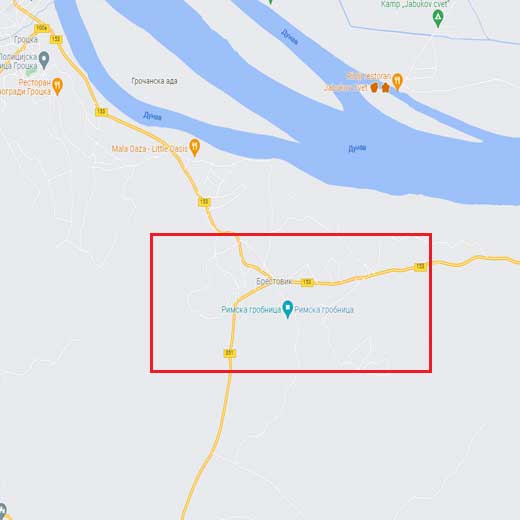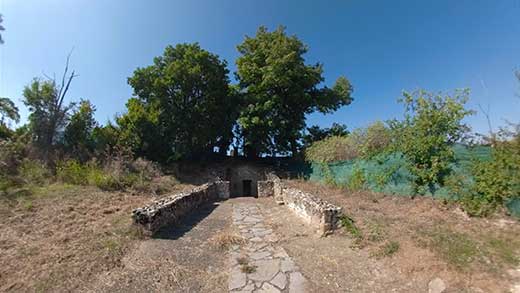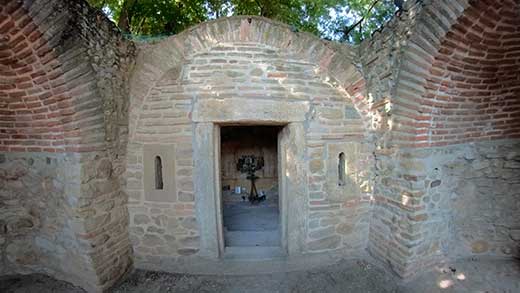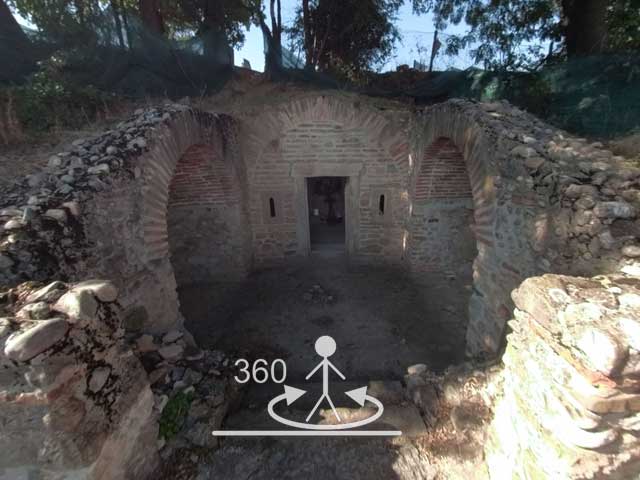Roman Crypt
Protected cultural monument of great significance, listed as SK 14 with the Republic Institute for the protection of monuments of cultural heritage.
Roman CryptBrestovik, Grocka municipality, City of Belgrade
Where is it
Late antiquity crypt in Brestovik, in Grocka municipality, is located next to the contemporary village cemetery.

Research
Late antiquity crypt in Brestovik was discovered in 1895 by the local Vukašin Milosavljević as he was planting some plum trees. As he was digging a hole for his tree, he discovered the vault of the tomb. In the autumn of that same year, Mihajlo Valtrović, the custodian of the National museum of Belgrade, discovered the entire tomb. Later research performed in 1955 revealed that the tomb was not built at once: firstly, the burial part was built and later the middle part with conha, the porch and the access road. It was determined that it was a Christian sacral building that actually represents the connection between antique and early Christian cult edifices.
The first conservation work on the tomb was performed in 1905, and then in 1964.
Dating
The crypt in Brestovik was built in late 4th or early 5th century and probably belonged to a wealthy family owning an estate nearby.


Description
The crypt was partly above the ground and partly dug inside the hill slope, oriented west-east. It consists of the access path, 4 m long, porch, middle area and burial chamber.
The vestibule was separated from the entrance with four pillars holding up the gable and was about 1 m higher from the middle area and paved with hexagonal bricks. From there, through the door and then by the stairs, one came down to the middle chamber also paved with hexagonal bricks. This space was rectangular in shape and decorated with marble statues and two figures of reclining lions. One of the niches contained the life-sized statue of the crypt owner. The purpose of the chamber was probably offering sacrifice to the deceased.
Last in line, the western chamber was rectangular in shape and vaulted. It contained painted tombs for three deceased people.
The vestibule and the middle chamber were partially visible above the ground, while the western chamber with three tombs was completely dug inside the hill slope.
The crypt was richly decorated with fresco decoration which is best preserved in the chamber with tombs. There are geometrical compositions, as well as motifs of plants and animals in ochre, cinnabar, blue, green, brown and red colour. On the western wall, human figures can be discerned.
Folk lore and belief
The locals from Brestovik call this early Christian crypt Vukašinš's Church.
There is a belief that this is, in fact, a temple with necropolis dedicated to Belgrade saints Ermil and Stratonik who were respected by both Catholic and Orthodox believers alike. They were sentenced to death by drowning in the Danube in the early 4thcentury. Their biographers state that these two martyrs were thrown in the Danube under the Belgrade fortress and their bodies emerged downstream, near Brestovik, where the local Christians buried them.
Julka Kuzmanović Cvetkovićarcheologist
